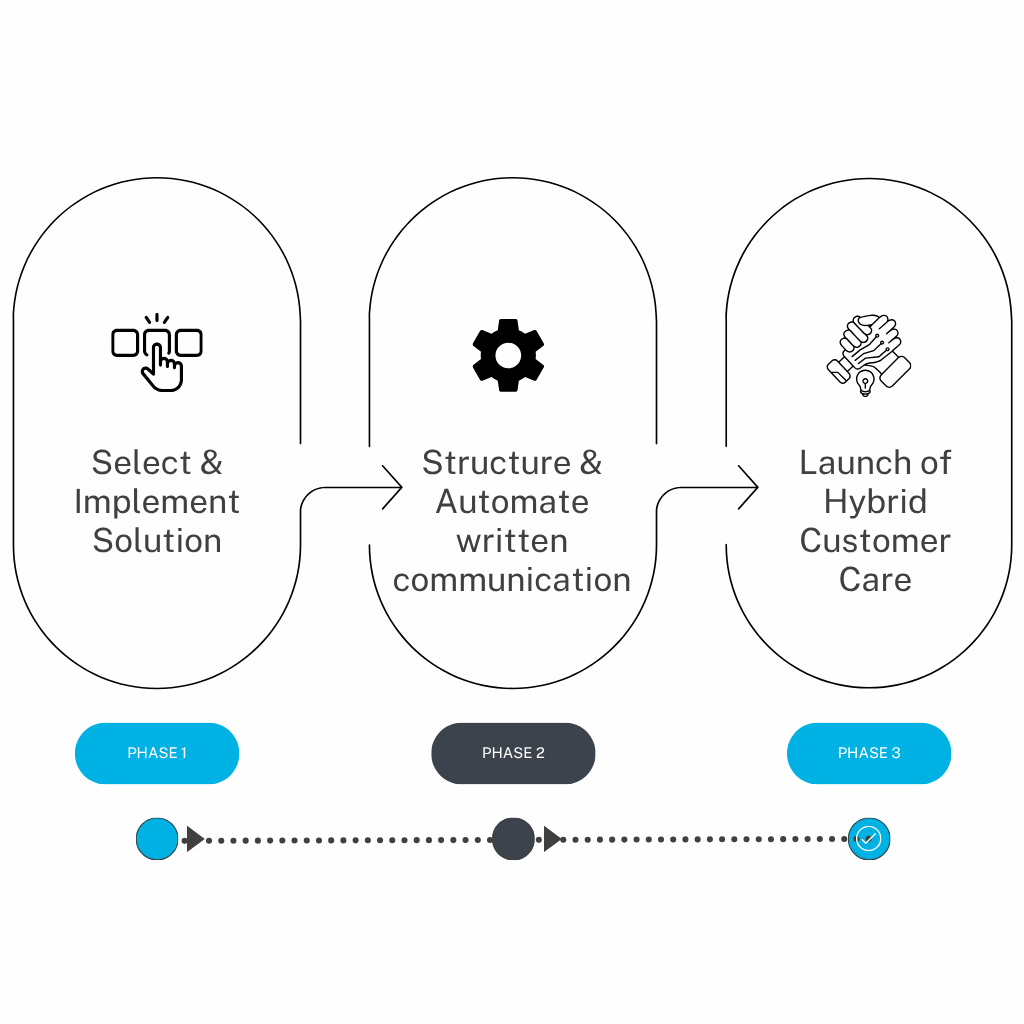Customer Service is one of those disciplines that is ideal for AI innovation: “up to 70% of customer service inquiries are repetitive and easy to automate (McKinsey)”.
The advantages of AI in customer service are endless: it drastically reduces cost, it leads to higher customer satisfaction, and it improves employee happiness by taking away the repetitive requests.
With such clear advantages, you’d expect that most ecommerce businesses would have already integrated AI in their customer service. This is not the case. Why? Properly implementing AI in your ecommerce set-up isn’t exactly easy nor fast, it’s a challenging process.


Salesupply is the specialist in ecommerce customer service. We have redefined ecommerce internationalisation by offering flexible pay-per-use service in 25 languages regardless of your CMS.
Now we are redefining ecommerce customer service again with flexible AI Integration:
As a specialist in ecommerce customer service, we have integrations for the most widely used ecommerce platforms and ERP systems. Below an overview of the AI solutions we can implement as well as the systems we can implement them in. Do you miss your solution or system? Please get in touch


For well-known luxury fashion brand from the Netherlands, we implemented an email AI solution.
The results after two months:

For a successful European B2B platform in plastics, we have integrated both an AI email and a new AI chatbot solution.
The results after three months:

For a leading Polish sportswear brand we recently integrated Salesupply Email Aigent, in agent assist mode to assist the customer care agents.
The first results:
We are passionate about quality customer service. Currently, AI is not yet capable to fully take over the role of customer service department. If you have your own customer service department, we gladly implement the AI solution for you and prepare your team to work together with it.
Use AI as your first-line virtual agent for repetitive tickets and as agent assist for the rest – with human handoff on low confidence and with clear quality checks.
Steps:
Start with clear KPIs, connect your knowledge base, OMS/CRM/logistics, and prioritize the highest-volume categories to accelerate ROI. Ship a pilot in one channel, add confidence thresholds and human handoff, then iterate on deflection, accuracy, AHT, and CSAT weekly.
AI can fully resolve FAQs (WISMO, returns), draft and translate replies, summarize threads, auto-tag/route, and escalate complex cases with context. In practice, AI now handles 45-70% of the written requests received by our AI clients – generating major cost as well as time savings.
Core capabilities AI:
Map 1–3 intents (e.g., WISMO, returns), structure policies/product data, define prompts and guardrails, integrate OMS/CRM, and design a human handoff. This way, as much as 50 percent of customer care interactions could be automated. (McKinsey)
A practical setup: